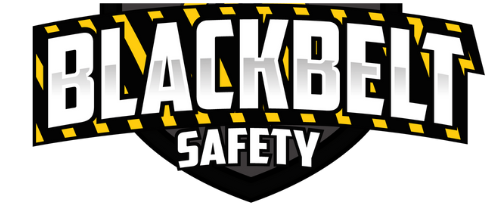Introduction
The Occupational Safety and Health Administration (OSHA) serves as the cornerstone of workplace safety in the United States, dedicated to ensuring that every employee has the right to a safe and healthy working environment. Since its inception in 1970, OSHA has been instrumental in setting and enforcing standards that reduce workplace hazards and provide a framework for occupational health and safety. The agency’s efforts have significantly decreased work-related injuries and illnesses across various industries, making it an essential ally for American workers and employers alike.
In its latest move to further enhance workplace safety, OSHA has amended its regulations concerning the representation of employers and employees during inspections. This significant rule change broadens the scope of who can act as a representative during OSHA’s safety inspections. Under the new amendment, employees now have the flexibility to choose either a fellow employee or a third party, such as a union representative or a safety consultant, to accompany an OSHA Compliance Safety and Health Officer (CSHO) during inspections. This pivotal update is designed to empower employees and ensure that inspections are as thorough and effective as possible, leveraging diverse expertise to identify and mitigate workplace hazards.
The latest amendment introduced by OSHA is a forward-thinking change aimed at enhancing the efficacy and comprehensiveness of workplace inspections. At the heart of this amendment is the empowerment of employees in the selection of their representation during these inspections. Previously, the scope of who could serve as a representative was somewhat limited. However, with the new rule, there’s a significant expansion. Employees can now choose their representatives, who may be either a co-worker or an external third party. This choice introduces a broader range of expertise and perspectives into the inspection process.
The rule specifically allows for third-party representation when deemed “reasonably necessary” by an OSHA Compliance Safety and Health Officer (CSHO). The necessity for a third party hinges on several factors, including but not limited to, the representative’s specialized knowledge of industry-specific hazards, their expertise in safety and health practices, or their ability to communicate in the languages spoken by employees. This ensures that the inspection is as thorough as possible, with nuanced understanding and communication at its core.
The need for this clarification arose from observations that the effectiveness of inspections could be significantly improved by involving representatives with specific knowledge or skills relevant to the workplace being inspected. There was also a growing recognition of the diverse workforce in many industries, where language barriers could impede the efficacy of communication during inspections. By allowing for third-party representatives who can bridge these gaps, OSHA aims to foster a more inclusive and comprehensive approach to workplace safety inspections. This change underscores OSHA’s commitment to evolving its regulations to better protect workers by making inspections more accessible, informative, and effective in identifying and mitigating potential hazards.


Importance of Employee Representation During Inspections
The role of a representative during OSHA inspections is pivotal, acting as a bridge between the workforce and the regulatory body. These representatives ensure that the voice and concerns of the employees are heard, facilitating a thorough and transparent inspection process. By having someone familiar with the daily operations and potential hazards of the workplace, inspectors can gain valuable insights that might otherwise be overlooked. This representative can point out specific safety concerns, provide context to observed conditions, and help interpret findings in a way that aligns with the reality of the work environment.
Having knowledgeable representatives, whether they are fellow employees or third-party experts, brings a multitude of benefits to the inspection process. For one, these representatives can offer specialized knowledge or expertise in certain areas, such as chemical safety, ergonomics, or industrial hygiene, enriching the inspection with depth and detail that might not be available otherwise. They can identify not just the obvious hazards but also those that are subtle or complex, requiring specific expertise to detect.
Moreover, third-party representatives can bring an unbiased perspective to the inspection, possibly identifying risks that internal representatives might miss due to familiarity bias. Their involvement ensures a more objective and comprehensive assessment of the workplace safety conditions.
Another significant benefit is the enhancement of communication. A representative who speaks the same language or understands the cultural nuances of the workforce can ensure that all employees’ safety concerns and observations are accurately conveyed to the OSHA inspector. This is crucial in diverse work environments where language barriers might impede effective communication.
In essence, the representation of employees during OSHA inspections is a critical component in ensuring that the inspection process is as effective and inclusive as possible. Knowledgeable representatives contribute not just to the identification of hazards but also to the formulation of practical, understandable, and implementable safety solutions. Their involvement is key to fostering a culture of safety that goes beyond compliance, aiming for a workplace where every employee feels valued and protected.
Implications for Companies
The amendment to OSHA’s regulations on the choice of representatives during inspections introduces a paradigm shift in how companies approach workplace safety and compliance. This rule not only broadens the scope of who can act as a representative during these critical evaluations but also places a spotlight on the importance of expertise and communication in enhancing safety outcomes. The implications for companies are multifaceted, touching on operational, cultural, and strategic aspects of workplace safety.
- Expanded Choice of Representatives:
Companies must now adapt to a new dynamic where employees have the autonomy to select either a fellow employee or an external third party as their representative. This change means that employers need to be prepared for the possibility of third-party safety consultants, union representatives, or other specialists stepping into their facilities with a potentially new set of criteria for inspections. This expanded choice empowers employees but also requires companies to be more transparent and cooperative with external parties who have a vested interest in the safety of the workforce.
- Impact on Workplace Safety Culture:
The rule reinforces the idea that workplace safety is a collaborative effort. By allowing employees to choose their representatives, companies are encouraged to foster a more open and inclusive safety culture. This openness is likely to enhance trust between employers and employees, leading to more proactive identification and mitigation of hazards. A safety culture that values employee input and expertise not only complies with regulations but also builds a more engaged and aware workforce, which is crucial for long-term safety improvements.
- Significance of Third-Party Expertise:
In certain situations, especially where specialized knowledge or skills are necessary to identify or understand specific hazards, the involvement of third-party experts can be invaluable. These experts can provide insights into best practices from across the industry, innovative solutions to complex safety challenges, and impartial assessments of workplace conditions. For companies, this means that inspections can serve not just as a compliance exercise but as an opportunity for learning and development. The rule implicitly acknowledges that third-party experts can significantly contribute to not just identifying but also solving workplace safety issues.
Moreover, in environments with diverse workforces, third-party representatives with language skills and cultural competence can ensure that safety messages are communicated effectively to all employees, thereby enhancing the overall safety education and compliance.
In conclusion, the new OSHA rule on representatives during inspections holds companies to a higher standard of engagement, transparency, and expertise in managing workplace safety. This rule can significantly impact how safety cultures are cultivated within companies, emphasizing the importance of collaboration, inclusivity, and external expertise. For employers, navigating these changes successfully will mean embracing these principles as part of their operational ethos, thereby not only enhancing compliance but also fostering a safer, more productive work environment.
Compliance Strategies
Adapting to OSHA’s new rule on the selection of representatives for workplace inspections requires employers to integrate several key strategies into their safety and compliance programs. These strategies not only ensure compliance with the regulation but also enhance the effectiveness of the inspection process, contributing to a safer workplace. Here’s how companies can align with the new rule while promoting a culture of safety and transparency.
- Establishing Clear Policies:
First and foremost, employers should develop and communicate clear policies regarding the process of selecting a representative for OSHA inspections. These policies should outline how employees can nominate representatives, whether internal or third-party, and describe the criteria that these representatives must meet, such as relevant expertise or language skills. Transparency in this process encourages trust and ensures that all employees understand their rights and the procedures involved.
- Facilitating Employee Choice:
Employers can facilitate employee choice by creating an open environment where employees feel comfortable expressing their preferences for a representative. This might involve setting up a nomination system or holding meetings where employees can discuss and select a representative collectively. Employers should respect these choices and provide the necessary support for the representatives to perform their roles effectively during inspections.
- Training and Preparation:
Training plays a crucial role in preparing both employees and chosen representatives for OSHA inspections. Employers should offer regular training sessions that cover the basics of workplace safety, the specifics of OSHA regulations, and the inspection process. For third-party representatives, companies might consider briefings to familiarize them with the workplace and any specific safety concerns. Additionally, conducting mock inspections can help employees and representatives alike understand what to expect and how to best cooperate with OSHA inspectors.
- Encouraging Open Communication:
Open communication channels between employees, their representatives, and management are vital. Employers should encourage feedback and discussions about safety concerns and consider this input when making safety improvements. This approach not only aids compliance but also reinforces a proactive safety culture.
By implementing these strategies, employers can navigate the new OSHA rule effectively, ensuring that the selection of representatives for inspections is a process that enhances workplace safety and fosters a culture of collaboration and openness.
Challenges and Solutions
The new OSHA rule on the selection of representatives for workplace inspections brings with it a set of challenges that companies must navigate. These challenges, however, can be transformed into opportunities for enhancing workplace safety and compliance. Here’s a look at some potential hurdles and strategies for overcoming them.
- Resistance to Third-Party Involvement:
One challenge may come from a reluctance to allow third-party representatives into the workplace, stemming from concerns over confidentiality or disruptions to operations. Solution: Companies can overcome this by vetting and establishing partnerships with reputable third-party safety consultants or firms well-versed in confidentiality agreements. Clear communication about the value these experts bring in terms of specialized knowledge and impartial assessments can also alleviate concerns.
- Ensuring Representative Competence:
Ensuring that chosen representatives, whether internal or external, possess the necessary knowledge and skills to effectively contribute to the inspection process can be challenging. Solution: Implement a criterion-based selection process for representatives that assesses their qualifications, expertise in relevant safety areas, and communication skills. Offering training sessions for potential representatives can also elevate their readiness and competence.
- Maintaining Open Communication:
Maintaining an open line of communication between management, employees, and representatives might be challenging, especially in larger organizations. Solution: Establish regular safety meetings and forums where safety concerns and suggestions can be openly discussed. Utilize digital communication platforms to facilitate ongoing dialogue and ensure that everyone is informed and engaged in safety practices.
- Balancing Operational Efficiency with Safety Compliance:
Balancing the need for operational efficiency with compliance to safety regulations, especially with the added layer of third-party inspections, can be challenging. Solution: Integrating safety compliance as a core component of operational planning can help. Viewing safety measures not as hindrances but as integral to efficiency and productivity can shift the organizational mindset towards a more safety-oriented culture.
By addressing these challenges with thoughtful strategies that prioritize communication, training, and collaboration, companies can not only comply with the new OSHA rule but also strengthen their overall safety culture. This proactive approach fosters a safer work environment where employees feel valued and protected, ultimately contributing to the success and sustainability of the organization.
Case Studies/Examples
Case Study 1: Manufacturing Sector
A mid-sized manufacturing company, facing challenges with recurring safety incidents, decided to embrace OSHA’s new rule by incorporating third-party safety experts into their inspection process. They partnered with a safety consultancy specializing in manufacturing environments. The external expert, with a deep understanding of manufacturing hazards and preventive measures, accompanied OSHA inspectors and provided insights that led to the identification and mitigation of previously overlooked risks. The company saw a significant reduction in incidents, attributed to the enhanced thoroughness of inspections and the implementation of targeted safety improvements.
Lessons Learned: Leveraging external expertise can uncover hidden hazards and lead to more effective safety measures. Openness to third-party involvement enhances the inspection process and safety outcomes.
Case Study 2: Retail Industry
A national retail chain implemented a policy allowing employees to nominate their representatives for OSHA inspections. This policy encouraged active participation and led to the selection of employees who were particularly knowledgeable about the specific safety challenges in the retail setting. Their involvement during inspections resulted in practical, employee-driven safety enhancements, improving overall workplace safety and employee morale.
Lessons Learned: Empowering employees to choose their representatives fosters a culture of safety and collaboration. Engaged employees are more likely to contribute meaningful insights that improve workplace safety.
Conclusion
OSHA’s new rule on the choice of representatives for inspections marks a significant advancement in workplace safety, emphasizing the importance of collaboration, expertise, and communication in creating safer work environments. By allowing employees the freedom to select knowledgeable representatives, whether from within the company or third-party experts, the rule opens doors to more thorough and effective safety inspections. Companies have an exceptional opportunity to strengthen their safety culture and compliance practices through this change. Embracing this rule not only meets regulatory requirements but also demonstrates a commitment to the well-being and protection of every employee, setting a foundation for a safer and more productive workplace.
Timeline of OJ da Juiceman’s Career and Legal Issues: This timeline charts key moments in OJ da Juiceman’s career, from his start in the music industry to his most recent legal entanglement. It highlights the ups and downs, including major releases and past legal issues.
Take Courses
Get Hired
Social Media
Related Topics
skilled in the area for all | язык | More

The Value of AEDs in Public Spaces: Weighing Cost Against Lives Saved

what are the main causes of deaths and injuries on scaffolds

Unlocking Workplace Safety Secrets: The Shocking Truth About OSHA 10 vs OSHA 30 Training!


